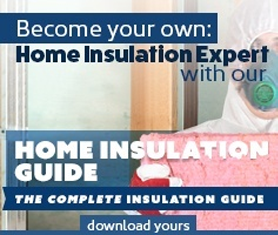 At First Quality Roofing & Insulation, we're used to working with many shadows on the wall. But some of these shadows don't come from objects; they come from people – our valued customers who “shadow” us as we go about our work.
At First Quality Roofing & Insulation, we're used to working with many shadows on the wall. But some of these shadows don't come from objects; they come from people – our valued customers who “shadow” us as we go about our work.
Some customers want to watch us and then assess whether they might be able to install insulation themselves someday. Others are simply curious about the process and want to learn about how to make their homes more energy-efficient.
Either way, we're seeing a lot more shadows when it comes to installing loose-fill, cellulose insulation. It seems to have captured people's imagination in ways that other insulation has not. Maybe it's the product itself: recycled newspaper, which conforms well to tight spaces and settles nicely over existing insulation. Or maybe it's the (somewhat entertaining) installation process: a blower machine that functions like a vacuum cleaner in reverse because the insulation is blown outward.
You'll learn plenty about this nifty insulating material from First Quality, starting with the fact that it could stem the energy losses in your home by about 20 percent. Shadow us freely and learn about our seven-step installation process:
Step 1: Seal leaks
We pull back the insulation to better expose ceiling perforations, holes for electrical wires and plumbing pipes. Then we use expanding foam to fill larger gaps – and caulk for smaller gaps – around these areas.
Step 2: Install vent chutes
We pull back the insulation from the roof, position a vent chute so that the bottom extends about 6 inches into the overhang and then staple it into place. Vent chutes help air circulate around the eaves, reducing heat in the summer and moisture in the winter, so that you get the most of the insulation.
Step 3: Insulate the access door
We lay R-19 fiberglass batt insulation over the attic hatch and cut two pieces that are slightly larger than the hatch. We put the two pieces on top of each other and wrap them together with duct tape. We then staple this puffy package to the hatch, driving staples through the duct tape.
Step 4: Make the marks
We use a permanent marker to make horizontal lines on the trusses to set an insulation level to guide our installation efforts. (If you're curious about how we attain this number, consult an article from First Quality Roofing & Insulation, “How to know how much attic insulation is enough.”) We usually err on the side of making more lines than fewer lines since blown-in insulation will get dusty, and we want to ensure the insulation is deep enough across the attic.
Step 5: Spread out the existing insulation
We use a broom handle to push the existing insulation to the edges of the attic, knowing that we should make good use of insulation that is still viable.
Step 6: Prepare the blower
We set the blower on a tarp close to the attic access, load the hopper with the blown-in insulation and connect the hoses to the blower machine, using duct tape over the coupler to secure the connection. Then we feed the hoses up to the attic.
Step 7: Blow in the insulation
We position ourselves in the middle of the attic and start blowing in the insulation as far away from the access panel as possible. We use slow and steady sweeping motions to blow in the insulation until the insulation reaches the level we've marked on the trusses. Then we pivot in place and blow in the insulation across the opposite side of the attic.
Call First Quality Roofing & Insulation to launch your loose-fill learning curve – and cast the telling shadows of education on your attic.
















